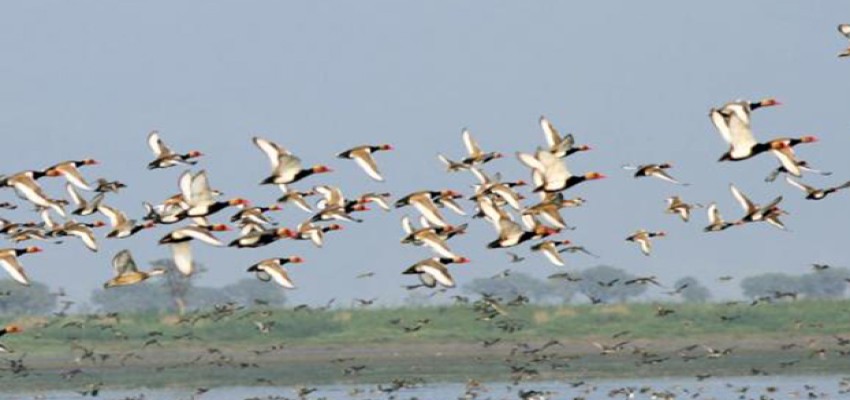
Recently, the Asian Water Bird Census (AWC) -2023 has reported that the number of birds in the Kole wetlands of Thrissur in Kerala has reduced significantly. The number of water birds in the wetland has decreased from the 15,959 birds counted during the 2022 survey to 9,904.
Unscientific construction on Kole wetlands is being counted as one of the reasons for the decline.
What does the census say?
The AWC is held annually to count and document the number of water birds. Conducted since 1991, this is the 32nd year of organised bird count at Kole Wetlands. The AWC is held annually to count and document the number of water birds.
The population decline was mainly due to habitat loss of the in the region. This is due to unscientific construction and waste dumping.
Rare birds in the Wetland
In the Asian Water Bird Census (AWC) -2023, some rare birds were spotted by the birdwatchers. Some of the rare birds spotted in the region are migratory Amur Falcon, Wood Sandpiper, and Cattle Egret. Other migratory birds such as Whiskered Tern, Painted Storks, Glossy Ibis and Garganey were also spotted in the region.
About Asian Water Bird Census
The census identifies and counts water birds and predominantly focuses on the declining population of the birds in wetlands. It is a part of the International Waterbird Census. These censuses are conducted by Wetland International. The census is conducted in different parts of the world such as Asia, Africa, the Caribbean, and the Neotropics. Neotropics includes South America and Central America.
What are Wetlands?
Wetlands are areas where water covers the soil, or is present either at or near the surface of the soil all year or for varying periods of time during the year, including during the growing season.
Given below are the main objectives of the Asian Waterbird Census:
• to obtain information on an annual basis of waterbird populations at wetlands in the region
• to monitor on an annual basis the status and condition of wetlands
• to encourage greater interest in waterbirds and wetlands amongst people, and thereby promote the conservation of wetlands and waterbirds in the region.

